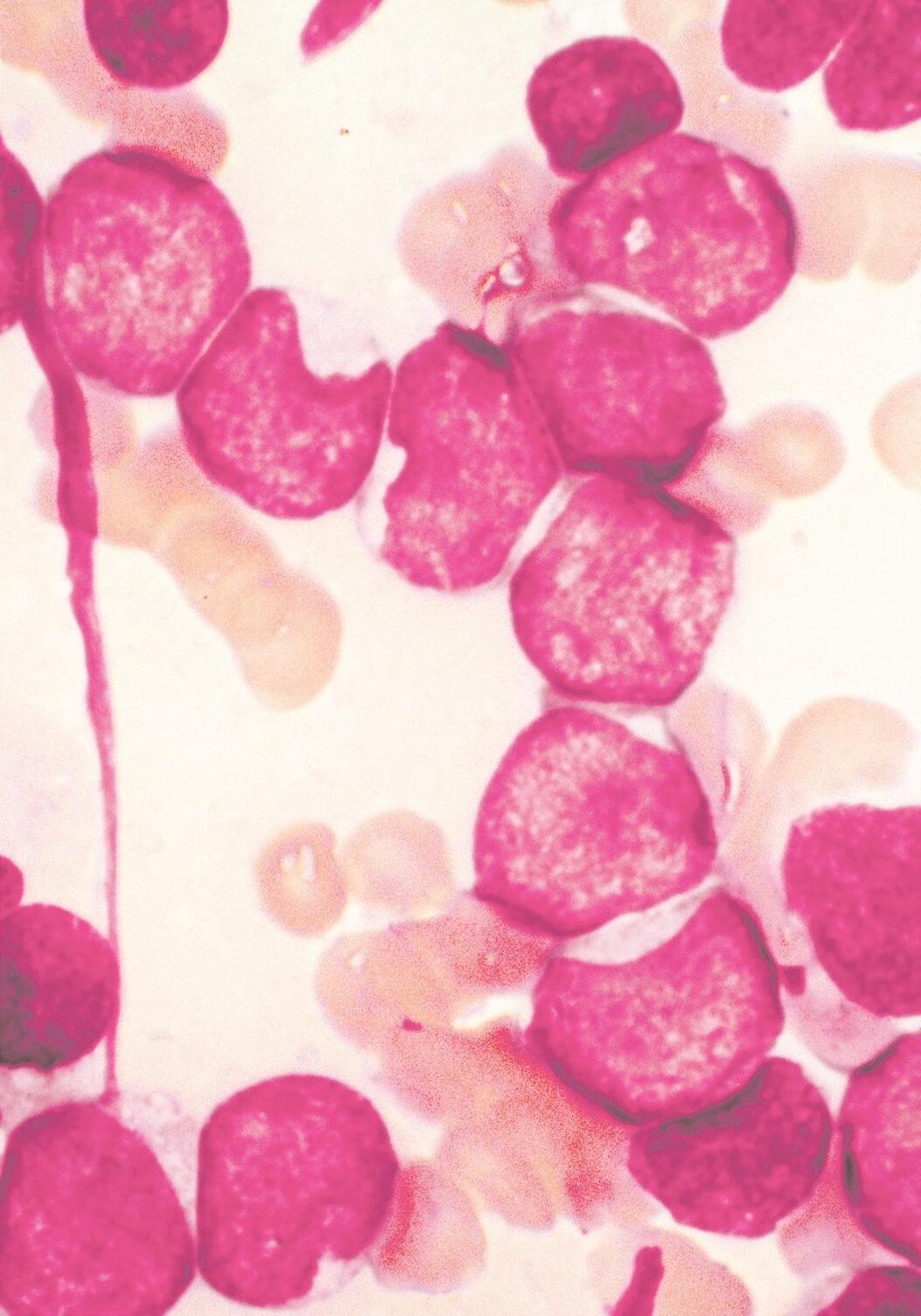
6 minute read
TARGETING THERAPIES
From breakthrough insights to more effective treatments
Pinpointing Disease With Exosomes
Advertisement
The exosomes secreted by cells used to be considered nothing more than the body’s garbage haulers, but Yong (Tiger) Zhang is using them to generate innovative and targeted therapies. His research fuses chemistry with biology to explore protein post-translational modifications—which are essential to biological function—to discover new therapeutic targets for cancer, neurodegenerative diseases and immune disorders. He is also engineering antibodies to more precisely treat these conditions as well as infectious diseases.
“We want to understand the fundamentals of biological systems using the chemical approach,” Zhang says. “Through this, we are inventing new chemicals and synthetic molecules that can potentially be used to improve human health.”
Zhang’s funding awards include a four-year, $2 million+ R01 NIH grant to reprogram exosomes for biomedical applications, and a five-year, $1.9 million NIH General Medical Sciences grant to advance understanding of complex ADP-ribosylation processes.
Light micrograph of blood cells from bone marrow in acute myeloid leukemia (AML). USC Mann research aims to identify new therapies to benefit AML patients.
Attacking Acute Myeloid Leukemia
The current survival rate for patients with acute myeloid leukemia (AML) is less than 30%—and the outcomes for older people are significantly worse. Houda Alachkar uses genomics to expand knowledge about blood cancers and identify new therapeutic strategies to extend and improve the lives of afflicted patients. Her research includes profiling the immune system’s T cell receptor repertoire to find ways of using them to fight AML. She is also developing innovative therapeutic strategies for targeting CD99 and FLT3, which are receptors highly expressed in AML.
“Being in the Mann School allows me to work with biochemists, pharmaceutical scientists and bioengineers,” says Alachkar, whose collaborators at the school include Ian Haworth, Tiger Zhang, J. Andrew MacKay, Jean Chen Shih and Serghei Mangul, along with faculty at the USC Norris Comprehensive Cancer Center. Recent funding awarded to support her work includes a five-year, $1.79 million grant from the NIH. “Partnering with clinicians at the USC Norris Comprehensive Cancer Center helps us validate our findings with patient cohorts and bring ideas from patients to study in the lab,” she says. “The interaction with clinicians, hematologists and oncologists is vital.”
Identifying Novel Treatments for Alcohol Use Disorders
Daryl Davies’ research revolves around the development of novel treatments for alcohol use disorders (AUDs), which rank third on the list of preventable causes of morbidity and mortality in the United States. The economic burden to society for AUDs is in excess of $220 billion annually. To date, pharmacotherapies, even in conjunction with psychosocial strategies, have had limited success in treating AUDs—with approximately 70% of patients relapsing into heavy drinking within one year. Therefore, the development of new treatments for AUDs represents an important unmet medical need.
In response to this challenge, Davies and his team focus on identifying molecular targets of alcohol action in the central nervous system. Recent findings from this work have resulted in specific targets for which therapeutic compounds have been designed and are currently under investigation. This multidisciplinary endeavor brings together a diverse and complementary group of scientists with behavioral, pharmacological, electrophysiological, molecular, genetic, computational and medicinal chemistry expertise. Davies is the Timothy M. Chan Professor of Complementary Therapeutics and director of the Alcohol and Brain Research Laboratory at USC.
Julio Camarero the John A. Biles Professor in Pharmaceutical Sciences, won one of the first NIH “big idea” awards. He recently earned a new patent for a novel cyclotide for potential use in treating cancer and heart attack.

Decoding and Targeting RNA Viruses
RNA viruses include coronaviruses, Zika, HIV, Ebola and many other causes of devastating disease. Zhipeng Lu devises technologies to explore the structures and functions of RNA molecules to understand the processes driving such conditions. These efforts are unveiling new knowledge about geneexpression regulation in cells and host-virus interactions. Lu’s findings are opening up
30%
CURRENT SURVIVAL RATE FOR PATIENTS WITH ACUTE MYELOID LEUKEMIA new directions in drug discovery to foster RNA-targeting therapeutics that will more effectively treat viral infections, genetic disorders, cancers and other serious conditions. His research awards include a five-year, $2 million+ R35 grant from the National Institute of General Medical Sciences to develop new chemical and computational tools to study RNA structures.
Combating Fatty Liver Disease
Bangyan L. Stiles is exploring the role played by the estrogen-related receptor ERRa in fatty liver disease and liver cancer. ERRa is crucial to metabolic regulation, and Stiles seeks to define the precise molecules it controls to adjust the liver’s lipid, or fat, levels. She garnered a four-year, $1.4 million grant from the NIH for research that could lead to new therapeutic targets. The research builds on her previous discovery that inhibiting ERRa in mouse models successfully blocks the fat accumulation that leads to nonalcoholic steatohepatitis, an aggressive form of nonalcoholic fatty liver disease that heightens cancer risk. Obesity is a national epidemic known to increase the chances of liver cancer in individuals with a high body mass index.
Restoring Harmony to Steroid Hormones
Steroid hormones are critical to bodily functions from metabolism to sexual reproduction, and disruptions to their activity can cause serious diseases and infertility. Dean Vassilios Papadopoulos’ research focuses on disorders related to altered steroid hormone synthesis to address such disorders. Working with colleagues, including Martine Culty, Papadopoulos was the first to grow human, testosterone-producing Leydig cells in the lab. He also developed new molecules that induce testosterone production by dysfunctional Leydig cells. These breakthroughs pave the way for the development of novel therapeutics and potentially enabling a patient’s own stem cells to not only improve fertility and erectile dysfunction but also reduce the dangers of comorbidities linked to testosterone deficiency, such as loss of muscle mass, osteoporosis, obesity, liver disease, metabolic syndrome and cardiovascular diseases.
“Our work over the years on the mechanism underlying steroid hormone production has led to identifying the molecular bases of diseases in which steroids play a determining role, as well as the development of drugs to treat and diagnostics to monitor these diseases,” Papadopoulos says.
He has also defined the mechanisms that control the mitochondrial functions critical for bile acid formation in the liver. He is currently testing certain chemicals in mitochondrial proteins to assess their effectiveness as therapeutic targets for suppressing or delaying nonalcoholic fatty liver disease, cases of which are rising worldwide.
Targeting the Microbiome
Liana Asatryan investigates the mechanisms underlying alcohol use and neurodegenerative disorders with the goal of developing novel therapeutic strategies. Using mouse models, she is exploring the links between changes in gut microbiota, their metabolites, and the alcohol-induced processes of inflammation in the brain and liver. Understanding these causal associations opens avenues to new therapies for targeting the microbiome to more effectively treat alcohol use disorders and related organ dysfunction.
Preventing Cardiovascular Disease
Pharmacists play a pivotal role in the prevention of cardiovascular disease, notes Tien Ng, a cardiology specialist and interim chair of the Titus Family Department of Clinical Pharmacy. Pharmacists have the training to help patients modify risk factors through education on lifestyle and diet and to reduce the risk of disease progression through medication optimization. As the healthcare provider of first contact for many, pharmacists can also provide the personal support and positive reinforcement that some individuals need to get kick-started on the path toward improved health, Ng says. His research includes comparing drug therapies used to manage patients hospitalized with heart failure as well as addressing methamphetamine-associated cardiomyopathy.
The school’s faculty members have long been recognized for their groundbreaking contributions— from University Professor Jean Chen Shih ’s influential work illuminating how the brain enzyme monoamine oxidase (MAO) affects behavior to Enrique Cadenas ’ study of the molecular mechanisms inherent in brain aging and Alzheimer’s disease. Shih is the Boyd and Elsie Welin Professor, and Cadenas holds the Charles Krown/Alumni Professor of Pharmacology and Pharmaceutical Sciences.
Delivering New Cancer and Diabetes Therapies
With a focus on cancer and diabetes, Jennica Zaro develops nanoparticle protein-delivery platforms for directing novel therapies to specific sites in the body. Her research works to improve the effectiveness of treatments by enriching their concentration against disease while avoiding healthy cells to minimize side effects. Zaro is currently exploring the effectiveness of proinsulin-transferrin as a liver-specific drug that can bring glycemic control to near-normal levels in diabetes patients. She is also testing the ability of pH-sensitive nanoconstructs of cell-penetrating peptides to selectively deliver drugs to tumor cells and infection sites that exhibit mildly acidic microenvironments—a feature commonly associated with therapy resistance.
BILLION
70%
OF PATIENTS RELAPSE INTO HEAVY DRINKING AFTER PHARMACOTHERAPIES AND PSYCHOSOCIAL
Exploring Epithelial Cellular Function
The epithelial cells lining our organs and blood vessels not only protect our bodies but also enable a range of vital functions— from absorption, filtration and secretion to sensory reception. Curtis T. Okamoto applies bioinformatics to investigate how these cells determine where to put the newly synthesized membrane proteins that are so vital to establishing and maintaining cellular and organ function. This work is unlocking knowledge about what makes us healthy and what drives disease.
Easing Inflammation to Promote Healing
Although essential to the body’s healing process, inflammation can lead to neurodegeneration, cancer, eye disorders, diabetes
“I’m developing compounds to stop the cause of blindness, and we have three agents in either preclinical or late clinical trials or in human studies. One of the drugs, applied topically, can repair the eye without causing fibrosis—something no other drug has been shown to do.”
Stan Louie
and other diseases. Stan Louie, director of the Clinical Experimental Therapeutics Program, is expanding knowledge about inflammation to develop treatments to ameliorate and even prevent the progression of such diseases. He has developed four therapeutic platforms, including a compound that could potentially stop retinitis pigmentosa and autoimmune diseases such as systemic lupus erythematosus. His work with the USC Center for Neuronal Longevity explores the potential of transepithelial electrical stimulation to treat retinal degeneration and Alzheimer’s disease. Louie’s funding awards include a $1.6+ million grant from the U.S. Department of Defense to test the effectiveness of an eyedrop formulation—NorLeu3Angiotensin (1–7)—in healing severe eye injuries.








